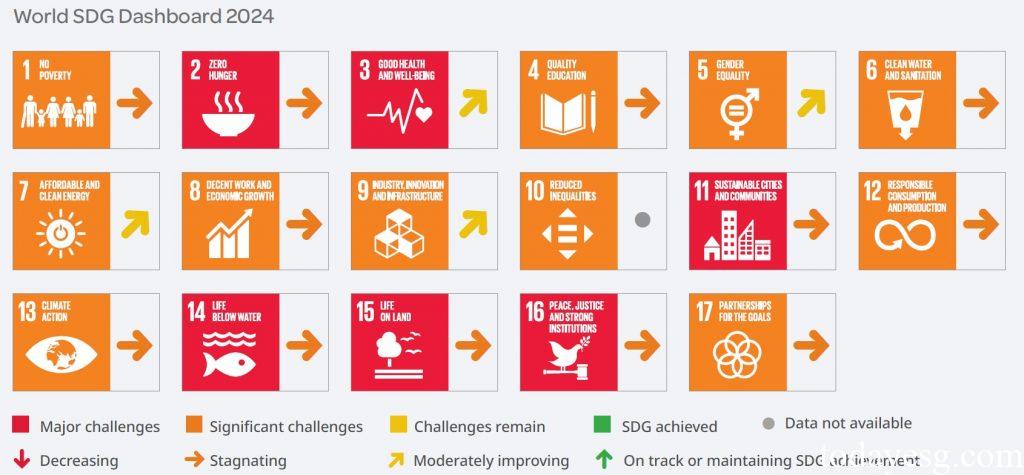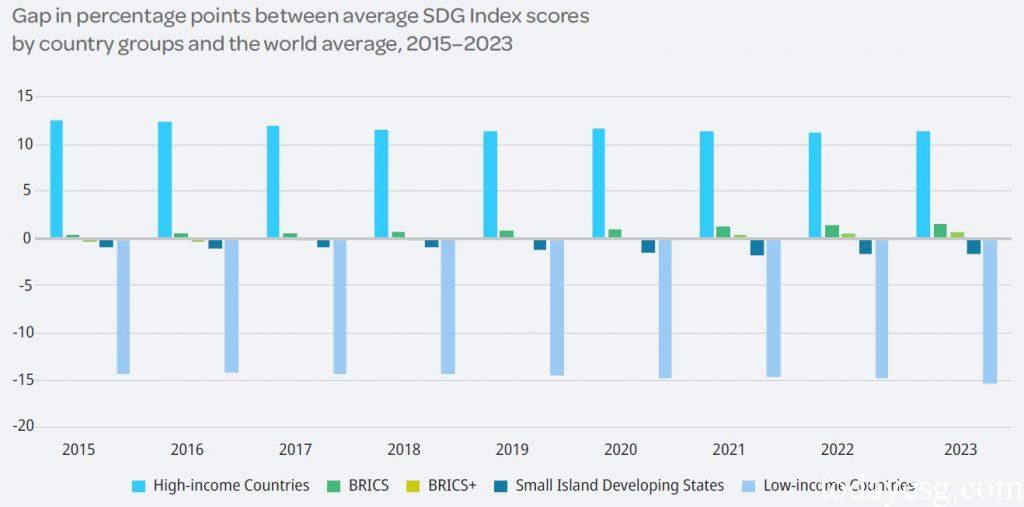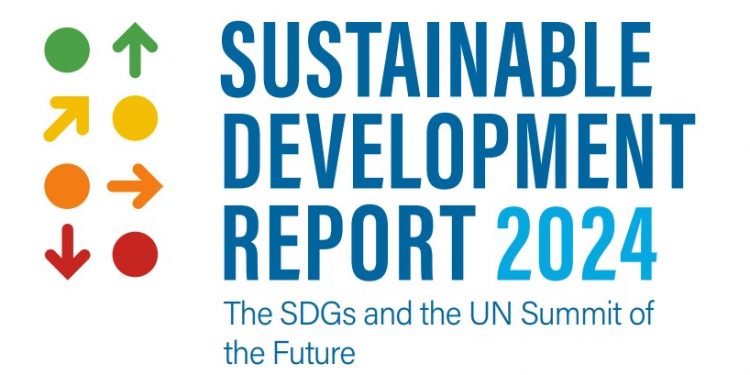Sustainable Development Goals Index
The United Nations Sustainable Development Solutions Network (SDSN) releases the 2024 Sustainable Development Goals Index (SDG Index) report, which aims to analyze the development of the SDG Index in various regions and countries around the world.
The Sustainable Development Goals Index aims to measure the progress of United Nations member states in achieving the Sustainable Development Goals. It consists of 125 indicators, including 98 global indicators. The Sustainable Development Goals Index requires member countries to have no more than 20% missing data. This year, 167 out of 193 United Nations members are eligible.
Related Post: The United Nations Releases 2024 Global Sustainable Development Report
Sustainable Development Goals Index in the World
This year, the global Sustainable Development Goals index has increased compared to last year, but the development speed is relatively slow. There is a significant difference in scores among countries in terms of indices, with the highest score exceeding 80 and the lowest being less than 50 (calculated based on a maximum score of 100). Among the 17 Sustainable Development Goals, six of them present major development challenges. These six items are: the second item Zero Hunger, the third item Good Health and Well-being, the eleventh item Sustainable Cities and Communities, the fourteenth item Life Below Water, the fifteenth item Life on Land, and the sixteenth item Peace, Justice, and Strong Institutions.

Within the five years after the 2015 Sustainable Development Goals were proposed, the progress rate of low-income countries (1.6) was faster than that of high-income countries (0.7), while since 2020, the progress rate of low-income countries (0.1) has been lower than that of high-income countries (0.3). The current average low score for low-income countries is 51, while the average score for high-income countries is 78. This may be due to factors such as global economic development and climate change, which have prevented low-income countries from obtaining sufficient financing from the international market.
The United Nations Sustainable Development Solutions Network predicts that at the current rate of sustainable development, 3 sustainable development goals can be achieved by 2030, while the remaining 14 are difficult to achieve. Sustainable development is a global responsibility, and the United Nations has included the International Spillover Index in this year’s assessment to measure countries’ support for UN-based multilateralism. The International Spillover Index considers both positive and negative spillover effects. Positive spillover effects include official development assistance, while negative spillover effects include unsustainable consumption patterns that harm the environment. The country spillover index of low-income countries is relatively high because the negative spillover effects generated by these countries are relatively low.
Sustainable Development Goal Index in Different Countries
The top ten countries in the 2024 Sustainable Development Goals Index are Finland (86.4), Sweden (85.7), Denmark (85.0), Germany (83.4), France (82.8), Austria (82.5), Norway (82.2), Croatia (82.2), the United Kingdom (82.2), and Poland (81.7), all of which belong to the European region. The rankings of these countries are like those of previous years, and currently they face challenges focused on the twelfth Responsible Consumption and Production and the thirteenth Climate Action. The progress in these areas can improve the score of their international spillover index and continue to enhance their sustainable development situation.
From the analysis of the Sustainable Development Goals index in various regions, the sustainable development scores of high-income countries, BRICS countries, Small Island Developing States, and low-income countries have gradually declined. The difference between the scores of high-income countries and the world average has remained stable, while the difference between the scores of low-income countries and the world average has gradually expanded, indicating pressure on the sustainable development progress of low-income countries.

Reference:








